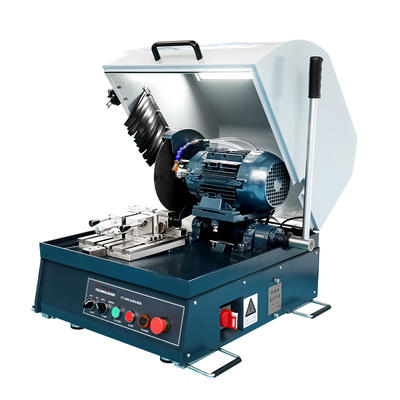The core of SemiPOL's high-precision quantitative grinder lies in its parallel grinding and polishing technology. This technology ensures that the sample surface maintains high consistency and flatness during the grinding process through precise mechanical control and efficient grinding process. This consistency and flatness is not only related to the appearance of the sample, but also an important guarantee for the image quality of the sample under the microscope.
Precise mechanical control:
SemiPOL adopts advanced mechanical design, including precision grinding discs, stable grinding seats and high-precision drive systems. The coordinated work of these components ensures stability and accuracy during the grinding process.
The speed and direction of the grinding disc can be adjusted to meet the grinding needs of different materials. At the same time, the swing speed and amplitude of the grinding seat can also be precisely controlled by dual stepper motors, thereby achieving full control of the grinding process.
Efficient grinding process:
SemiPOL's grinding process has undergone a long period of research and development and optimization to ensure the perfect combination of grinding efficiency and grinding quality. During the grinding process, the selection of grinding liquid and abrasive particles, the control of grinding pressure and the setting of grinding time have all been carefully calculated and experimentally verified.
By monitoring the amount of material removed during the grinding process in real time, SemiPOL high precision quantitative grinding machine can ensure the accuracy and consistency of grinding. When the set grinding amount is reached, the device automatically stops running, avoiding the risk of over-grinding and sample damage.
The advantage of parallel grinding and polishing technology is that it can significantly improve the image quality of the sample under the microscope. A flat and consistent sample surface can reflect light more evenly, allowing the microscope to capture clearer and more accurate images.
Improved resolution: A flat sample surface reduces light scattering and interference, allowing the microscope to distinguish more subtle structures and details. This is crucial for research in fields such as materials science, biology, and semiconductor manufacturing.
Enhanced contrast: A consistent sample surface makes the image under the microscope more contrasty, making it easier for researchers to distinguish different substances and structures.
In addition to improving the quality of microscope imaging, SemiPOL's parallel grinding and polishing technology also provides a reliable foundation for subsequent data analysis and scientific research.
Accuracy: A flat and consistent sample surface ensures the accuracy of the measurement data. In materials science, even small dimensional changes can have a significant impact on the performance of the material. Therefore, accurate sample preparation is a prerequisite for ensuring the accuracy of data analysis.
Repeatability: SemiPOL's parallel grinding and polishing technology is highly repeatable. This means that researchers can repeatedly prepare samples of the same quality under different experimental conditions, thereby verifying the reliability and validity of the experimental results.
Due to its excellent parallel grinding and polishing technology, SemiPOL high-precision quantitative grinding machines are widely used in many fields.
Material Science: In material science research, SemiPOL is able to prepare high-quality samples for observing and analyzing the microstructure and properties of materials.
Semiconductor Manufacturing: In the semiconductor manufacturing process, SemiPOL can ensure the flatness and consistency of the wafer, thereby improving the manufacturing quality and yield of the chip.
Optical lens processing: In optical lens processing, SemiPOL is able to prepare high-precision lens surfaces to meet the needs of various optical systems.

 中文简体
中文简体 英语
英语 西班牙语
西班牙语 德语
德语






.jpg?imageView2/2/w/400/format/jpg/q/75)












